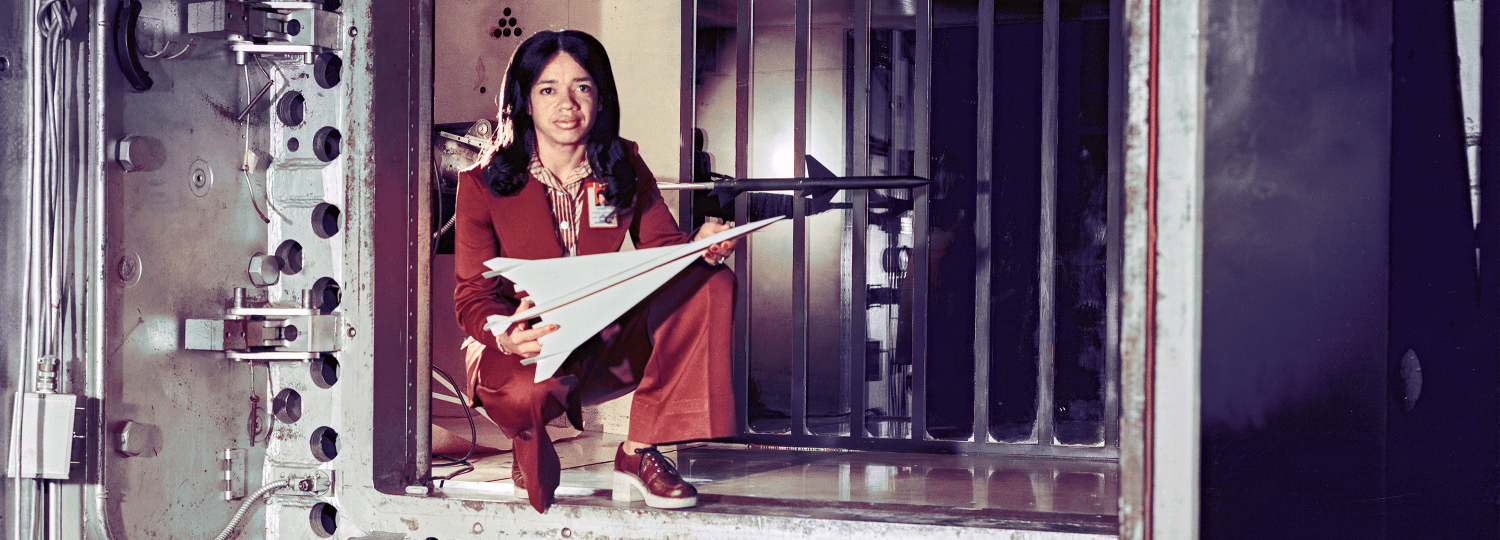
Celebrating the Pivotal Black Women Who Propelled the Manufacturing Industry Forward
As a tribute to Black History and Women’s History months, we celebrate and honor eight black women who have made lasting, indelible marks on the manufacturing industry. Spanning 160 years of history, here are a few of the many notable black women we are giving thanks to throughout these special history months and beyond.
1. Miriam E. Benjamin (1861-1947)
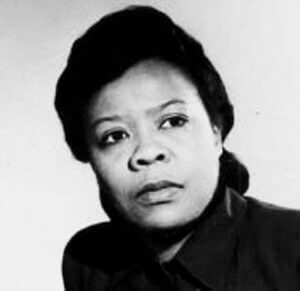 Miriam E. Benjamin is the second African American woman to receive a patent from the United States government for her invention of a gong and signal chair (U.S. Patent number 386,289). Her chair’s notification system allowed individuals to alert an attendant when assistance was needed. By depressing a button, a gong or ring would sound at the same moment that a red signal or flag on the chair itself would be made visible. The system was eventually adopted by the United States House of Representatives and was a precursor to the signaling system used on airplanes for passengers to seek assistance from flight attendants. 130 years later, manufacturers are using this concept in Andon systems to signal when an issue has occurred on the factory floor.
Miriam E. Benjamin is the second African American woman to receive a patent from the United States government for her invention of a gong and signal chair (U.S. Patent number 386,289). Her chair’s notification system allowed individuals to alert an attendant when assistance was needed. By depressing a button, a gong or ring would sound at the same moment that a red signal or flag on the chair itself would be made visible. The system was eventually adopted by the United States House of Representatives and was a precursor to the signaling system used on airplanes for passengers to seek assistance from flight attendants. 130 years later, manufacturers are using this concept in Andon systems to signal when an issue has occurred on the factory floor.
2. Sarah Breedlove, later known as Madam C.J. Walker (1867-1919)
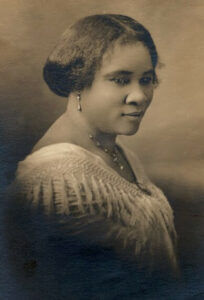 Madam C.J. Walker, born Sarah Breedlove, created specialized hair products for African-American hair and was one of the first American women to become a self-made millionaire. In 1910, Madame C. J. Walker Manufacturing Company headquarters was established in Indianapolis. As her business grew, she built a factory, hair salon, and beauty school to train her sales agents, and added a laboratory to help with research.
Madam C.J. Walker, born Sarah Breedlove, created specialized hair products for African-American hair and was one of the first American women to become a self-made millionaire. In 1910, Madame C. J. Walker Manufacturing Company headquarters was established in Indianapolis. As her business grew, she built a factory, hair salon, and beauty school to train her sales agents, and added a laboratory to help with research.
Walker’s manufacturing business was the source of employment and empowerment for thousands of women. Many of her company’s employees, including those in key management and staff positions, were women. By 1917 the company claimed to have trained nearly 20,000 women as sales agents for her products. In addition to training in sales and grooming, Walker showed other African American women how to budget, build their business, and become financially independent. She is credited as organizing the first national gatherings of women entrepreneurs to discuss business and commerce.
3. Evelyn Boyd Granville (1924-Present)
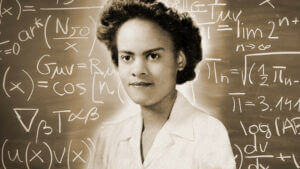 Evelyn Boyd performed pioneering work in the field of computing. She was the second black woman to earn a Ph.D. in mathematics from an American university. After graduating from Yale in 1949, she joined IBM’s Aviation Space and Information Systems division. She worked on various projects for the Apollo space program, including digital computer techniques. After IBM she continued to teach mathematics in California and Texas. Since 1967, Granville has remained a strong advocate for women’s education in tech.
Evelyn Boyd performed pioneering work in the field of computing. She was the second black woman to earn a Ph.D. in mathematics from an American university. After graduating from Yale in 1949, she joined IBM’s Aviation Space and Information Systems division. She worked on various projects for the Apollo space program, including digital computer techniques. After IBM she continued to teach mathematics in California and Texas. Since 1967, Granville has remained a strong advocate for women’s education in tech.
4. Etta Falconer (1933–2002)
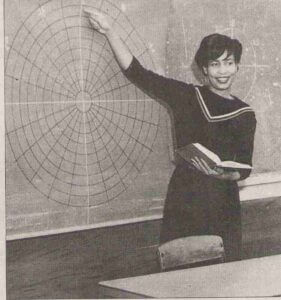 Etta Falconer was a mathematician who dedicated her entire career to increasing the number of black women in mathematics and mathematics-related careers. In 1982, she became one of the first black women to earn a Master’s Degree in Computer Science. While teaching at Spelman College, she instituted a summer science program for pre-freshmen, the NASA Women in Science Program, the NASA Undergraduate Science Research Program, and the College Honors Program. She earned a BS in Mathematics & Chemistry from Fisk University in 1953, a MS in Mathematics at the University of Wisconsin in 1954, a PhD in Mathematics at Emory University in 1969, and a MS in Computer Science at Atlanta University in 1982. In today’s manufacturing industry, mathematics plays an integral role in the steps of the production process.
Etta Falconer was a mathematician who dedicated her entire career to increasing the number of black women in mathematics and mathematics-related careers. In 1982, she became one of the first black women to earn a Master’s Degree in Computer Science. While teaching at Spelman College, she instituted a summer science program for pre-freshmen, the NASA Women in Science Program, the NASA Undergraduate Science Research Program, and the College Honors Program. She earned a BS in Mathematics & Chemistry from Fisk University in 1953, a MS in Mathematics at the University of Wisconsin in 1954, a PhD in Mathematics at Emory University in 1969, and a MS in Computer Science at Atlanta University in 1982. In today’s manufacturing industry, mathematics plays an integral role in the steps of the production process.
5. Christine Darden (1942-Present)
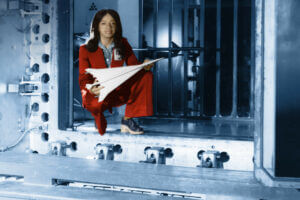
Christine Darden was part of the pool of ‘human computers’ who wrote complex programs and crunched numbers for engineers at NASA’s Langley Research Center. Eventually, she became one of few female aerospace engineers at NASA Langley. During Darden’s 40-year career at NASA, she became the deputy program manager of The TU-144 Experiments Program and was appointed as director in the Program Management Office of the Aerospace Performing Center where she oversaw research in air traffic management and aeronautics programs at NASA’s other centers.
Darden is the author of more than 50 publications in the field of high lift wing design in supersonic flow, flap design, sonic boom prediction, and sonic boom minimization. Darden is also featured in the book, “Hidden Figures” and was awarded a Congressional Gold Medal in November of 2019 For her service to the United States as an aeronautical engineer. She earned a BS in Mathematics from Hampton University in 1962, a MS in Physics from Virginia State University in 1967, and a PhD in Engineering from George Washington University in 1983.
6. Dr. Valerie Thomas (1943-Present)
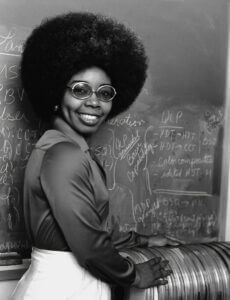 Dr. Valerie Thomas is the inventor of the Illusion Transmitter, receiving a patent in 1980. This technology was adopted by NASA and has since been used in surgery and the creation of television and video screens. Thomas had a long career with NASA, beginning as a data analyst and eventually overseeing the creation of the Landsat satellite program. While at NASA, she worked as project manager for the Space Physics Analysis Network and was associate chief for NASA’s Space Science Data Operations Office. She helped to develop computer program designs that supported research on Halley’s Comet, the ozone layer, and satellite technology.
Dr. Valerie Thomas is the inventor of the Illusion Transmitter, receiving a patent in 1980. This technology was adopted by NASA and has since been used in surgery and the creation of television and video screens. Thomas had a long career with NASA, beginning as a data analyst and eventually overseeing the creation of the Landsat satellite program. While at NASA, she worked as project manager for the Space Physics Analysis Network and was associate chief for NASA’s Space Science Data Operations Office. She helped to develop computer program designs that supported research on Halley’s Comet, the ozone layer, and satellite technology.
Throughout her career, Thomas held high-level positions at NASA including heading the Large Area Crop Inventory Experiment (LACIE) collaboration between NASA, NOAA, and USDA in 1974, serving as assistant program manager for Landsat/Nimbus (1975–1976), managing the NSSDC Computer Facility (1985), managing the Space Physics Analysis Network project (1986–1990), and serving as associate chief of the Space Science Data Operations Office. She authored many scientific papers and holds a patent for the illusion transmitter. For her achievements, Thomas has received numerous awards including the Goddard Space Flight Center Award of Merit and NASA’s Equal Opportunity Medal.
7. Ayanna Howard (1972-Present)
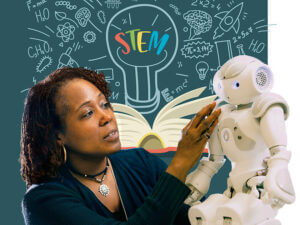 Ayanna Howard is an accomplished American roboticist, entrepreneur, and educator currently serving as the Dean of the College of Engineering at The Ohio State University. Assuming the post in March of 2021, Howard became the first woman to lead the College of Engineering. Her research specialties include human-robot interaction, assistive robots in the home, therapy gaming apps, and remote robotic exploration of extreme environments. It’s no surprise that she was recognized as one of “The Most Powerful Women Engineers” by Business Insider. Among all of this, she founded Zyrobotics, an award-winning educational technology company that makes STEM learning accessible to all children. She earned a BS in Engineering from Brown University in 1993, a MS in Electrical Engineering from the University of Southern California in 1994, a PhD in Electrical Engineering from the University of Southern California in 1999, and a MBA from Claremont Graduate University.
Ayanna Howard is an accomplished American roboticist, entrepreneur, and educator currently serving as the Dean of the College of Engineering at The Ohio State University. Assuming the post in March of 2021, Howard became the first woman to lead the College of Engineering. Her research specialties include human-robot interaction, assistive robots in the home, therapy gaming apps, and remote robotic exploration of extreme environments. It’s no surprise that she was recognized as one of “The Most Powerful Women Engineers” by Business Insider. Among all of this, she founded Zyrobotics, an award-winning educational technology company that makes STEM learning accessible to all children. She earned a BS in Engineering from Brown University in 1993, a MS in Electrical Engineering from the University of Southern California in 1994, a PhD in Electrical Engineering from the University of Southern California in 1999, and a MBA from Claremont Graduate University.
8. Sherrika Sanders
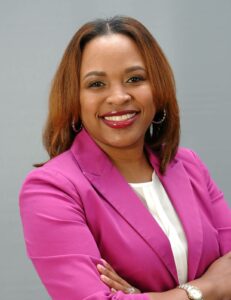 Sherrika Sanders is currently the R&D Director at Authentix, Inc. In 2017, Sherrika was a recipient of the “Hidden Figures of Dallas: Top Women of Color in STEM” awards from the National Society of Black Engineers DFW chapter. During her nine-year career with the Dow Chemical Company, she helped create a recruiting program called Building Engineering and Science Talent at Dow to attract women to manufacturing careers at an early age. She is also a career coach for students studying in STEM fields at her alma mater of Xavier University. Sherrika was introduced to STEM and modern manufacturing at a high school science camp that “sealed the deal” for her career choice. She earned a BS in Chemistry from Xavier University of Louisiana in 1998 and a PhD in Inorganic Chemistry from the University of Houston in 2004.
Sherrika Sanders is currently the R&D Director at Authentix, Inc. In 2017, Sherrika was a recipient of the “Hidden Figures of Dallas: Top Women of Color in STEM” awards from the National Society of Black Engineers DFW chapter. During her nine-year career with the Dow Chemical Company, she helped create a recruiting program called Building Engineering and Science Talent at Dow to attract women to manufacturing careers at an early age. She is also a career coach for students studying in STEM fields at her alma mater of Xavier University. Sherrika was introduced to STEM and modern manufacturing at a high school science camp that “sealed the deal” for her career choice. She earned a BS in Chemistry from Xavier University of Louisiana in 1998 and a PhD in Inorganic Chemistry from the University of Houston in 2004.
In an interview she did with Women in Manufacturing, Sherrika explained, “Success breeds success. As simple as it may seem, we should look for opportunities to make those women who have been successful in manufacturing more visible to other young women.”
These women overcame adversity to make advances in the manufacturing industry that we still use and rely upon to this day. But it’s not just about looking back to appreciate those who came before; we also celebrate the female leaders of today who are propelling the industry forward. Check out our podcast, Women of American Manufacturing to hear more stories of women who are bringing significant change and innovation to the industry.
